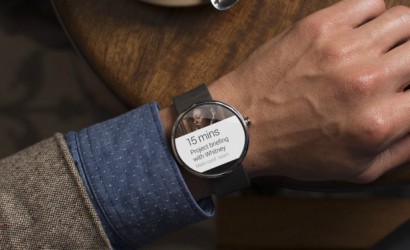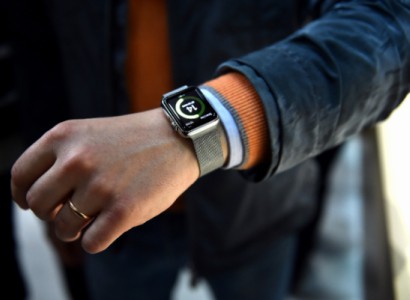Now that the Apple Watch is here to compete with Android watches, expect to see smartwatches on a lot more wrists. But how about wearables at work? Would employers really start handing out pricey Apple or Android watches to employees? A new report by tech research firm Tractica says yes — more than 75 million wearable devices will be deployed in work settings by 2020.
 But don’t get too excited yet. While factory workers might get smartwatches for specific hands-free tasks, office teams will likely have a harder time justifying such devices to the CIO or IT director. Just try proving that smartwatches will make your team more efficient in certain tasks, or that their fitness tracking features will improve worker health and energy.
But don’t get too excited yet. While factory workers might get smartwatches for specific hands-free tasks, office teams will likely have a harder time justifying such devices to the CIO or IT director. Just try proving that smartwatches will make your team more efficient in certain tasks, or that their fitness tracking features will improve worker health and energy.
So until those uphill battles get easier to win, it’s more likely that you’ll have to pay for your own Apple or Android watch for reading work email or tracking your cardio levels.
Nevertheless, Tractica expects wearables to start popping up in offices and factories in a big way, with corporate wellness programs will be the main driver of wearables at work. Smartwatches will make up most of workplace wearables, followed by fitness trackers and Internet-connected “smart” glasses, according to their report. Wireless “smart” clothing with is also further on the horizon, Tractica says.
The report says that the ‘bring your own device’ (BYOD) trend will also apply to wearables, but some corporate wellness programs will start offering fitness trackers or smartwatches at minimal or no cost to employees.
Wearables at work for hands-free tasks
Wearables are also headed to warehouses, manufacturing shop floors and field maintenance sites in a variety of industries, including oil and gas, mining, aerospace, warehouse, engineering services, transport/logistics, field maintenance, and mobile workforce management, the Tractica report says.
Besides Apple, Google and Fitbit, lots of other big players are also developing products for the wearables industry. Microsoft, Salesforce.com, SAP and Vuzix — just to name a few — are developing wearable hardware or software.
Despite the hype around Google’s Google Glass the past three years, it hasn’t yet rolled out to the general public, and Google has temporarily stopped selling it to individual “early adopters” until further development. But Google Glass is showing up in some workplaces, including hospital operating rooms.
And several other companies are making and testing Internet-connected eyewear for use in airline customer service, auto manufacturing, medical education and remote office-machine repair, among other applications.
Apple fights Android for our wrists
 Although Apple first announced its Apple Watch last fall along with its latest iPhones, the company just started accepting pre-orders for the watch on April 24. The watch won’t ship to most buyers until June, but by that time there will likely be even more than the thousand Apple Watch apps already created. For now, Apple is targeting well-heeled consumers, with the basic Apple Watch starting at US $349 and a high-end 18-karat gold model fetching $17,000.
Although Apple first announced its Apple Watch last fall along with its latest iPhones, the company just started accepting pre-orders for the watch on April 24. The watch won’t ship to most buyers until June, but by that time there will likely be even more than the thousand Apple Watch apps already created. For now, Apple is targeting well-heeled consumers, with the basic Apple Watch starting at US $349 and a high-end 18-karat gold model fetching $17,000.
Like the popular Pebble Watch and Android watches from major players like LG, Motorola and Samsung, the Apple Watch is not a standalone device, and needs to be paired with your compatible smartphone for most functions like checking email, listening to music and making phone calls. You can also set the Apple Watch, Pebble, and many Android watches to track your heart rates, steps walked or ran, sleep, and other health information.
You can find the full report on wearables at work on Tractica’s website.
Recent related stories:
SAP Android AR apps target field service, warehousing




